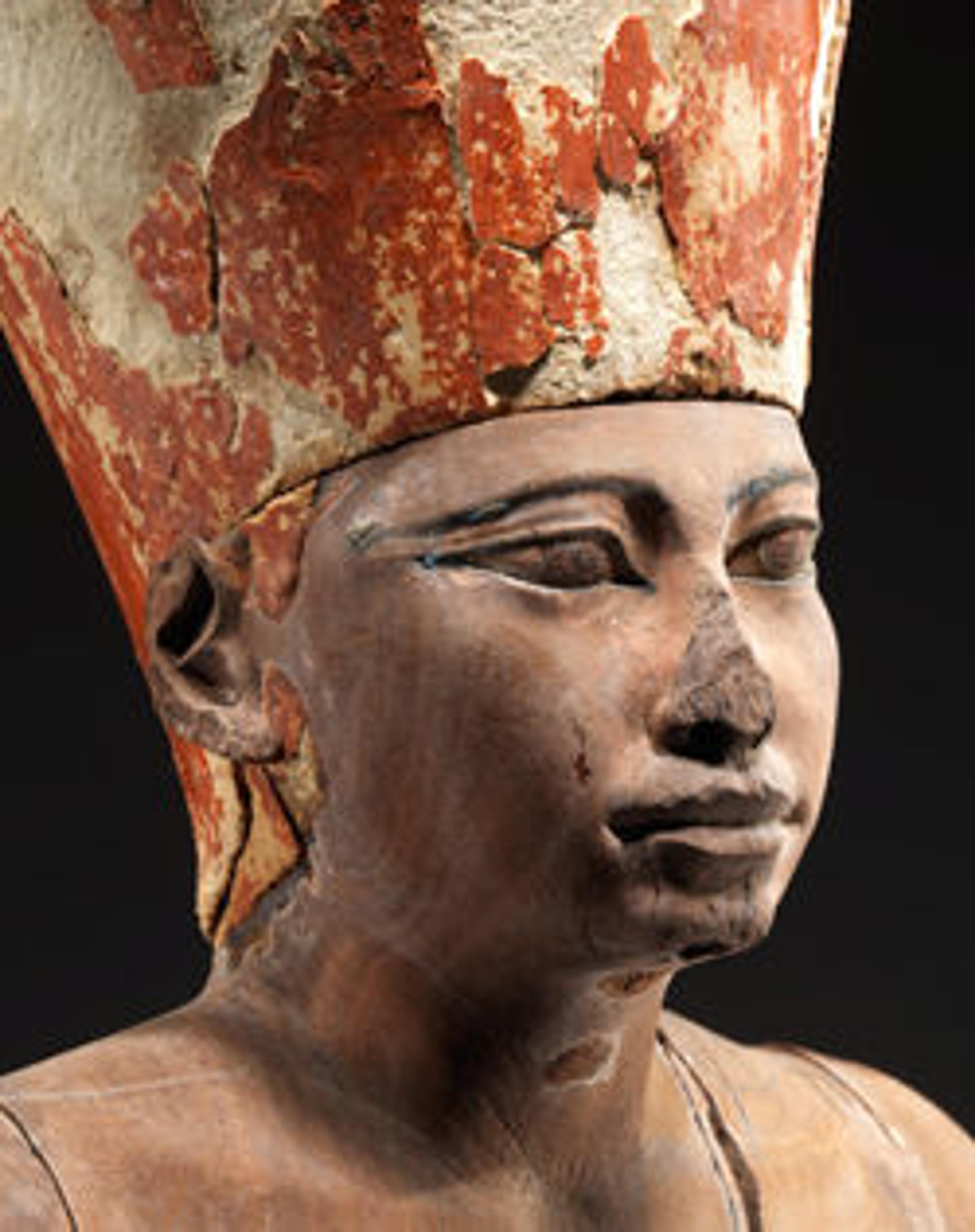Relief from the Chapel of the Overseer of the Troops Sehetepibre
The "overseer of troops" Sehetepibre, son of Satankhu was the owner of a commemorative chapel that housed two relief slabs in the collection (65.120.1, 65.120.2). On these slabs, he is seen seated at an offering table, and members of his family are depicted as mummies.
Althought hieroglyphs could be written in either direction, the preference was to write from right to left. Thus, the list of Sehetepibre's family begins at the right of this slab with the two larger mummies identified as Sehetepibre himself and the "lady of the house" Djehutihotep (perhaps his wife). Beside them, from right to left are the couple's daughter Satankhu; Seka, son of Satmay; Seshemi, daughter of Setankhu; Senebes, daughter of Gifit; and the "overseer of troops" Khentikheti, son of Renesankh. The list of family members is continued on the second slab (65.120.1).
Althought hieroglyphs could be written in either direction, the preference was to write from right to left. Thus, the list of Sehetepibre's family begins at the right of this slab with the two larger mummies identified as Sehetepibre himself and the "lady of the house" Djehutihotep (perhaps his wife). Beside them, from right to left are the couple's daughter Satankhu; Seka, son of Satmay; Seshemi, daughter of Setankhu; Senebes, daughter of Gifit; and the "overseer of troops" Khentikheti, son of Renesankh. The list of family members is continued on the second slab (65.120.1).
Artwork Details
- Title: Relief from the Chapel of the Overseer of the Troops Sehetepibre
- Period: Middle Kingdom
- Dynasty: Dynasty 13
- Date: ca. 1802–1640 B.C.
- Geography: From Egypt
- Medium: Limestone, paint
- Dimensions: H. 30.5 cm (12 in.); W. 49.2 cm (19 3/8 in.); Th. 9.7 cm (3 13/16 in.)
- Credit Line: Rogers Fund, 1965
- Object Number: 65.120.2
- Curatorial Department: Egyptian Art
More Artwork
Research Resources
The Met provides unparalleled resources for research and welcomes an international community of students and scholars. The Met's Open Access API is where creators and researchers can connect to the The Met collection. Open Access data and public domain images are available for unrestricted commercial and noncommercial use without permission or fee.
To request images under copyright and other restrictions, please use this Image Request form.
Feedback
We continue to research and examine historical and cultural context for objects in The Met collection. If you have comments or questions about this object record, please complete and submit this form. The Museum looks forward to receiving your comments.
